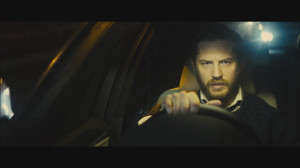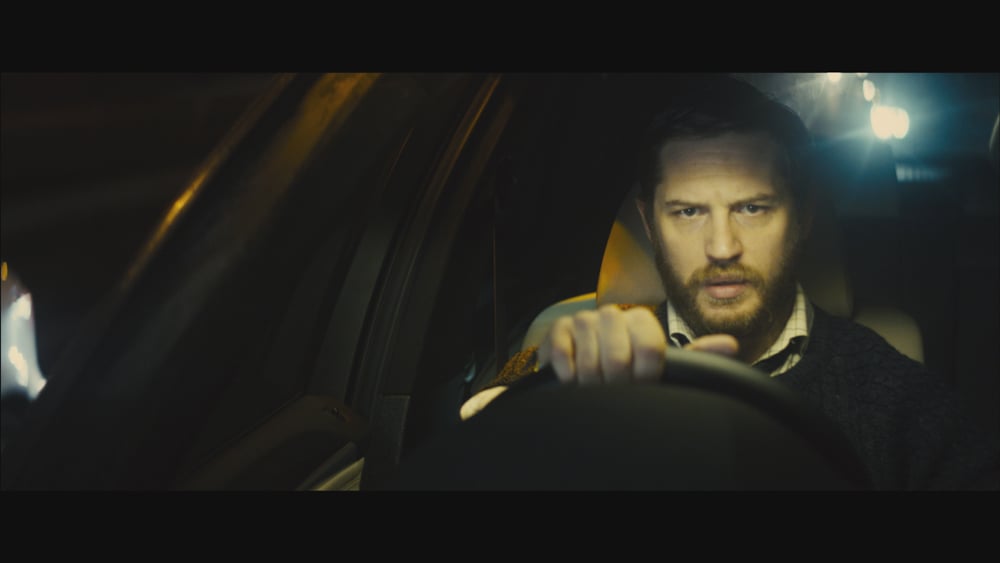
In the British psychological thriller “Locke,” Tom Hardy spends 80 minutes inside his car, driving, while he deals with both personal and professional crises. We never leave the car and we never leave Hardy, although there are many intrusions from the outside world: he spends almost the entire film making phone calls.
Steven Knight, who wrote and directed the film, is already a critically acclaimed screenwriter (“Dirty Pretty Things” and “Eastern Promises”) but has taken to directing films that are off-the-beaten-path passion projects. The Daily sat down with Knight earlier this month to discuss the making of his second feature as a director, which opens in the Bay Area today. Here are some excerpts from our conversation.
The Stanford Daily (TSD): What came first: Tom Hardy’s character, Locke, or the concept of the movie, that it takes place entirely in a car?
Steven Knight (SK): It was the two things at the same time. It was about the person and the belief that making a film about an ordinary tragedy was worth doing. I thought you could deal with an ordinary person’s tragedy in that environment [of a car] and the two things seemed to go together. I think this can only work if people really identify with the character, if his experience was something like what they could have. I don’t think this could work if he were an assassin on his way to kill the Prime Minister.
The great thing about this film is that the intimacy and the story go together. When the lights go up at the end of screenings, the most unexpected people get very emotional and talk about things in their own lives. People said, “this is the journey my dad never made,” “this is the journey I never made or I should have made.” So people really do see that it’s something similar to their own dilemmas. And that I think helps with the intimacy because then you stay with it.
TSD: The entire film takes place in a car, but it’s never visually boring. What did you think about when you were trying to figure out how to keep it visually interesting when you’ve got such a small space that you’re working in?
SK: We started out doing this as an experiment: could we get away with this, could we do this? I truly believe no matter what the film, no matter what the budget and the special effects, the part of the screen where most people are looking is the actor’s eyes. They want to know what’s going on in the head of the actor. And that’s still, I think, what filmmaking is about. But then the question is, ‘is that enough’?
In this film, it has to be, because we just see one character’s life unravel, and we watch him from the waist up deal with it. However, I’d just finished making a conventional film where we tested the cameras by shooting footage from a moving car in an urban environment. I thought it was beautiful, and it stood alone almost like an installation. I wondered if you could take that moving image and turn that into a theatre, and then put an actor into it, and then shoot a play in that theatre. That was the challenge. We knew that we weren’t going to come out of the car at any point, but we just wanted it to be quite beautiful. I quite like that you can turn the sound down [and] it will still look quite interesting visually.
TSD: Throughout the film, there are many images of blurred lights. I thought, at one point, that that was supposed to be Locke’s vision because he’s crying so much.
SK: It is that. It’s exactly that. I really wanted it to rain and it never did. I had to wet down the windscreen a couple of times to get that. It’s when you’re driving, and the emotion comes, and all the lights are like that because it’s blurred. And you see that going in and out of focus. When it goes out of focus, you see lights moving back and forth which just becomes completely unreal vision. It’s very surreal, like a painting, and I was very interested in putting a man who is concrete, who’s solid, who’s hard in reality, into that environment where everything is out of control, and he’s trying to control it.
TSD: And he doesn’t know where he is.
SK: Yeah. And the road signs, the whole business of when you deconstruct the film and you talk about the character’s journey, his arc, his destination, in this, it’s all real. He’s on a journey. You know he’s going down this road. You know where he’s heading. You know where he’s coming from, and that just means that you’re free then to deal with other things.
TSD: But you don’t often shoot from his perspective. We don’t see what he sees, so we don’t see where he’s going to. The camera is mostly just looking at him.
SK: I wanted to use the furniture of a car to make these metaphorical analogies. The GPS is where he’s going, and he’s got no choice. That’s where you’re going; there’s the arrow; and it’s going up that road. The road ahead is the future. The past is in the rearview mirror. So when he’s talking to his dad, who is dead, he talks into the rearview mirror because that’s what happened in the past. So it’s quite a neat sort of geography within the car that gives you all these metaphors.
TSD: You shot the film digitally, using a Red Camera. How was that? Where did you put the cameras?
SK: Yes. Shooting digitally was an absolute definite because we were shooting at night and shooting from a vehicle. It was actually the Alexa that I used before, and that was fantastic. Then it was a toss-up between the Alexa and the Red, and the Red was a bit more compact, so we could get more space in the car with the Red.
We moved the cameras around. We put the car on a low loader: we took the wheels off so that it was the right height relative to the road. Then we put three cameras in, and set off on the journey. We shot the film beginning-to-end in sequence, so we shot it two times a night, the whole thing. I would say action, and then the calls were real phone calls from a conference room in a hotel. [The actors] would make the calls in sequence every time. We would never go back and do a re-take. The Red camera has a memory of thirty minutes. So every twenty-seven minutes, we’d pull over, change the memory card, change the lens, change the angle so we had maximum amount of variety for the whole thing, and then set off again. Every advantage came from digital: you couldn’t have done it with this agility in any other way.
TSD: What was your approach to working with the actors and rehearsing for the film?
SK: We spent five days sitting around a table, all of the actors with Tom. Any sort of direction and character stuff was dealt with there. So by the time we went on the road, there was hardly any need to refer to actors and tell them what to do. There were some occasions when you wanted to try something different. Halfway through [the shoot], I sort of wrote a couple of letters to the actors saying we’ve got that version, now let’s try where you’re more angry or whatever.
But I did it away from the event of filming. Because of the nature of how we filmed it, you don’t want to interrupt it to ask them to do it again. It was more establishing the character, then let’s shoot it, then try something different, with a letter sent during the day so the actor can read it. And then that night, trying it. just letting it all go and see what happens. Because we were shooting it so often, they [would] get it wrong in a different place every night and get it right in a different place every night. So it was easy to cut between the different versions.
TSD: Were there continuity issues with doing that?
SK: It didn’t matter about the continuity of the background as long as there were lights and cars. There was a very early thought that we have to do each phone conversation on the same stretch of motorway, because of the continuity problem. But if anyone is looking at the motorway anyway, and identifying lamp posts, then you’re in trouble anyway. So what’s the point? Without the continuity problem, it meant that if you have a camera in, in the rearview or sliding that way, you could always cut from night four to the same scene from night six without a problem. Also, the lighting in the car keeps changing, so you don’t have that continuity problem either. Every decision on cuts was made according to performance. It was always trying to find the best performance.
Contact Alexandra Heeney at aheeney “at” stanford.edu.
